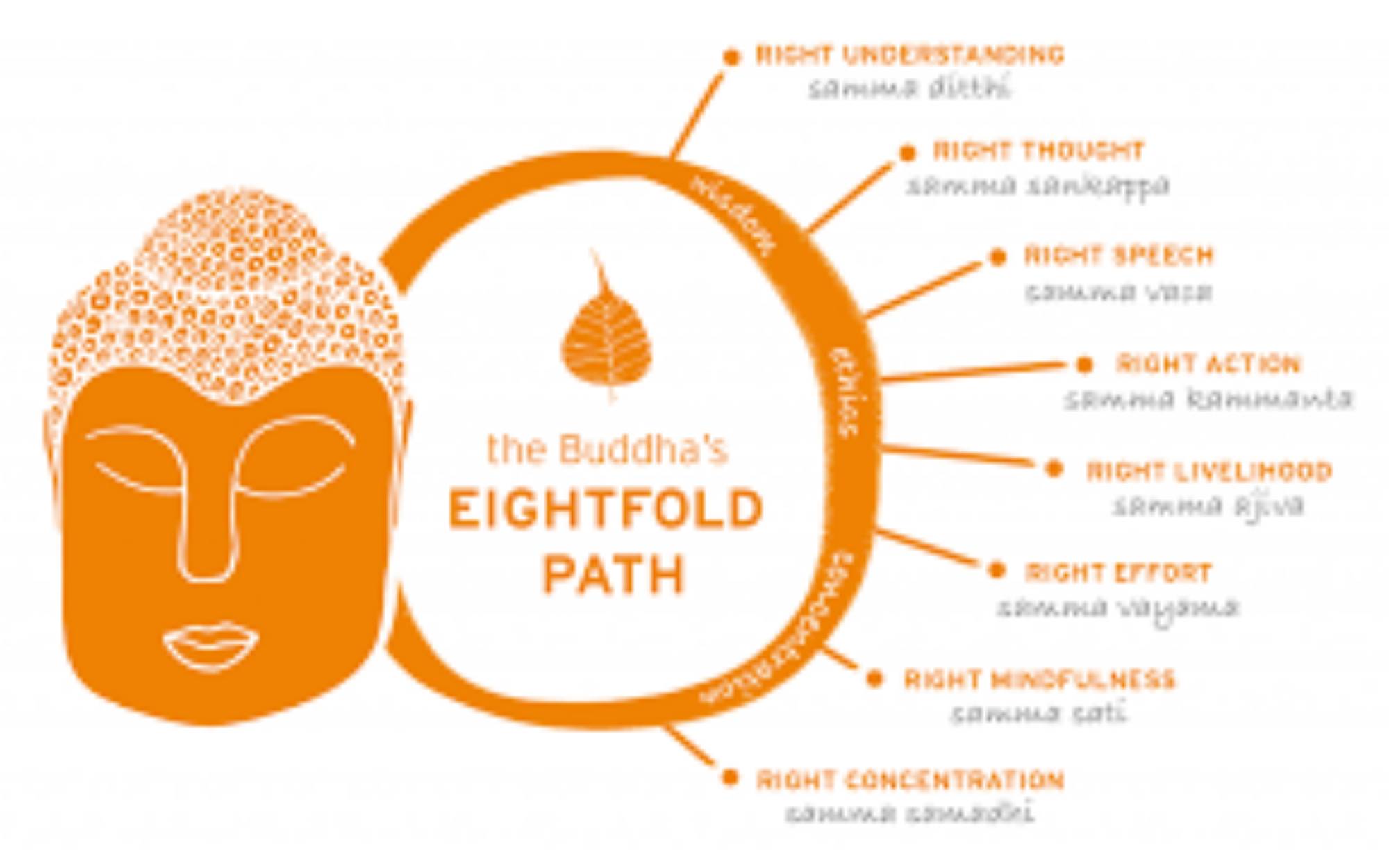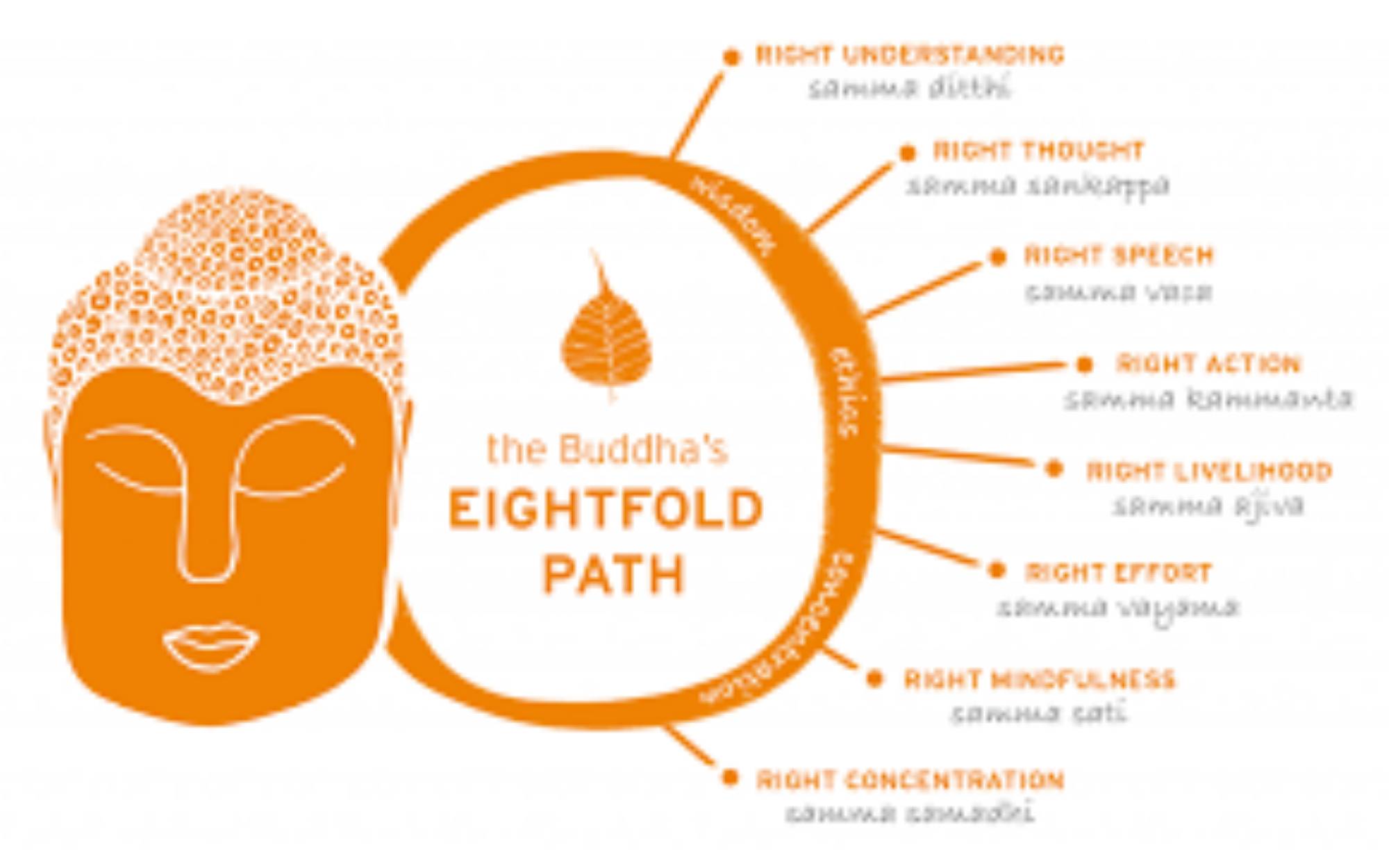The Noble Eightfold Path is a central teaching in Buddhism, outlining a path of practice that leads to the cessation of suffering and the achievement of enlightenment. It is one of the core elements of the Buddha's teachings and forms the fourth part of the Four Noble Truths. The path consists of eight interrelated practices that are divided into three essential elements of Buddhist practice: wisdom, ethical conduct, and mental discipline. Below is a detailed overview of each aspect of the path:
1. Right Understanding (Samma Ditthi)
- Explanation: This is the understanding of the Four Noble Truths: the truth of suffering, its origin, its cessation, and the path leading to its cessation.
- Objective: To gain insight into the nature of reality and to develop a clear understanding of how suffering arises and can be overcome.
2. Right Intention (Samma Sankappa)
- Explanation: Involves having the right resolve or intention, which is aligned with renunciation, good will, and non-harming.
- Objective: To cultivate thoughts of selflessness, love, and compassion, while abandoning thoughts driven by desire, ill will, or harmfulness.
3. Right Speech (Samma Vaca)
- Explanation: Encourages truthful, harmonious, gentle, and meaningful communication.
- Objective: To refrain from lying, divisive speech, harsh words, and idle chatter, thereby promoting honesty and kindness in interactions.
4. Right Action (Samma Kammanta)
- Explanation: Involves acting in ways that are ethical and harmonious, avoiding actions that cause harm to others.
- Objective: To engage in conduct that promotes peace and well-being, including refraining from taking life, stealing, and engaging in sexual misconduct.
5. Right Livelihood (Samma Ajiva)
- Explanation: Focuses on earning a living in a way that does not cause harm or injustice to others.
- Objective: To choose an occupation that supports ethical and compassionate living, avoiding professions that exploit or harm beings.
6. Right Effort (Samma Vayama)
- Explanation: Refers to cultivating an energetic and determined approach to developing wholesome states of mind and abandoning unwholesome ones.
- Objective: To prevent the arising of unwholesome states, abandon existing unwholesome states, cultivate wholesome states, and maintain them.
7. Right Mindfulness (Samma Sati)
- Explanation: Involves maintaining awareness of the body, feelings, mind, and mental phenomena.
- Objective: To develop a clear and present-focused awareness that allows one to observe experiences without attachment or aversion.
8. Right Concentration (Samma Samadhi)
- Explanation: The practice of developing deep states of mental focus and concentration through meditation.
- Objective: To cultivate a stable and focused mind, leading to deeper meditative absorption and insight.
Integration and Practice
The Noble Eightfold Path is not a linear progression but an interdependent set of practices that support each other. Practitioners are encouraged to cultivate all aspects of the path simultaneously, as each element enhances and reinforces the others. By following this path, individuals can progress toward liberation from suffering and ultimately attain enlightenment.
Conclusion
The Noble Eightfold Path serves as a guide for ethical and mental development, aimed at freeing individuals from suffering and achieving true happiness. It is a comprehensive framework that encompasses moral conduct, mental discipline, and wisdom, each of which is essential for the attainment of spiritual liberation in Buddhist practice.


